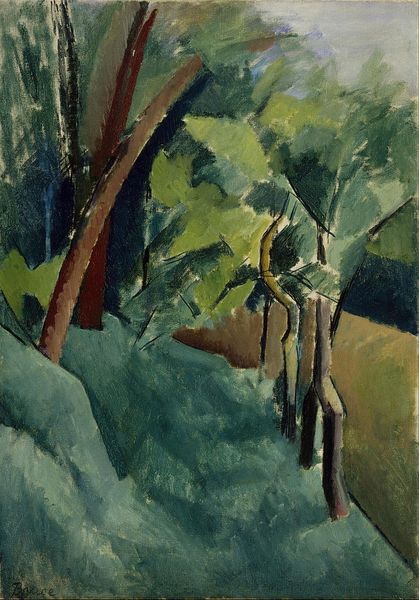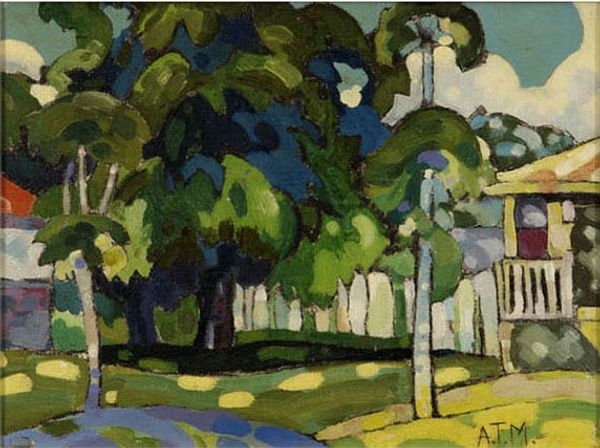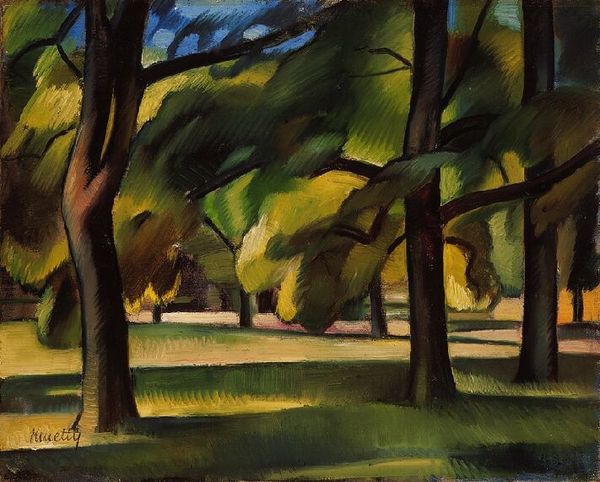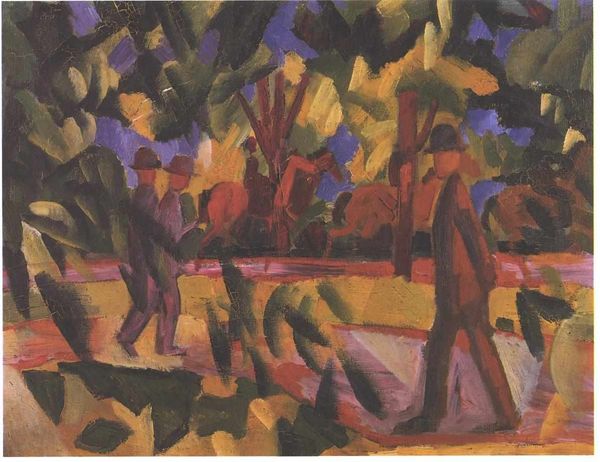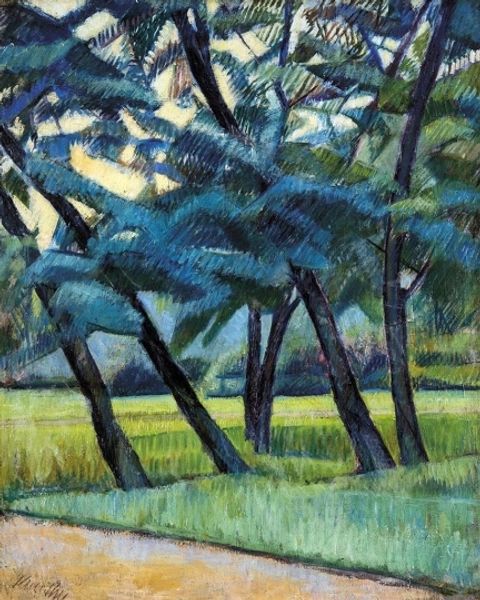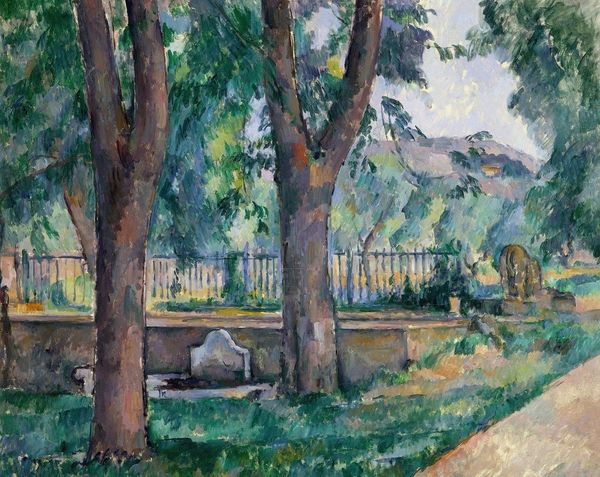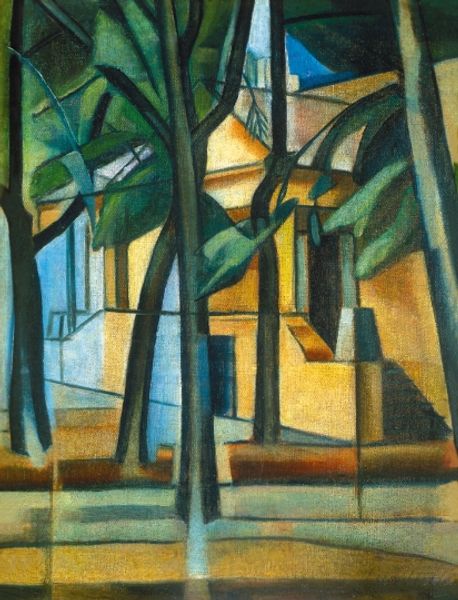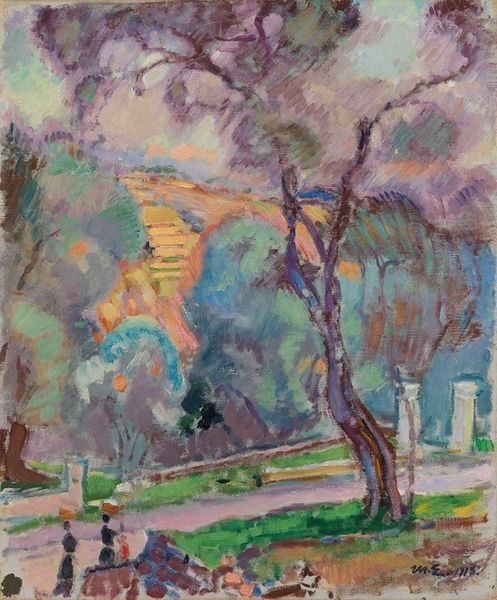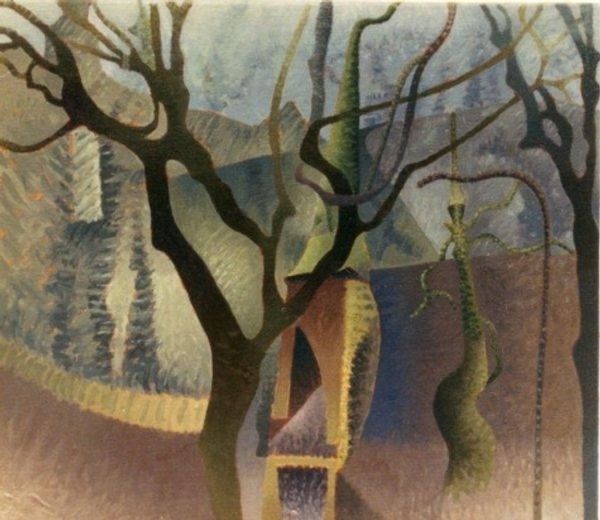
plein-air, oil-paint
#
plein-air
#
oil-paint
#
landscape
#
oil painting
#
modernism
Copyright: Kmetty János,Fair Use
Editor: Here we have János Kmetty’s oil painting "In the Park" from 1940. There’s something so tranquil about the scene; the bare tree dominates the composition, but also frames those figures in the distance. How do you interpret this work? Curator: What strikes me is how this seemingly peaceful scene belies the socio-political context of 1940. In the interwar period, parks were frequently spaces of contestation and control, reflecting deeper social inequalities. Do you think that this division is represented here through this somewhat alienating spatial composition? Editor: I hadn't considered that. So you’re saying the formal qualities – like the imposing tree and the distant figures – might point to a more complicated social commentary? Curator: Precisely. Think about the role of parks: designed for public use, but often reflecting class divisions, gender roles, or even racial segregation at the time. What stories might this park tell, beyond the surface of a simple landscape? Do the blurred figures suggest anonymity, dispossession, a loss of individuality within a broader social structure? Editor: That really shifts my perspective. I initially saw serenity, but now I see that the painting might be subtly questioning who has access to tranquility, and at what cost. Curator: It's in the absences and the quiet subversions where art often finds its power. We should consider this period as a key time for challenging established powers. Editor: That's given me a lot to think about regarding art's role in reflecting, and perhaps challenging, societal norms. Curator: Absolutely! And seeing art this way brings depth that purely formal appreciation often misses.
Comments
No comments
Be the first to comment and join the conversation on the ultimate creative platform.
